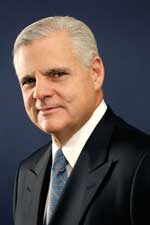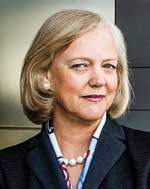In-Depth
2015 IT Landscape Review: Tech Giants Undergo Major Shifts
From the Dell-EMC deal to the dawn of the Windows-as-a-Service era, the IT industry saw several significant changes in 2015. Here's a snapshot of the biggest milestones of the past year, and what they mean for the channel.
- By Gladys Rama
- December 14, 2015
Some of the biggest players in the tech industry underwent major changes this past year, some through M&A, and others -- like Microsoft -- by taking their core businesses into new directions. Here are some of the standout events in 2015 and their potential impact on partners.
Dell Makes History with EMC Buy
In terms of sheer dollar figures, the biggest tech event of 2015 was the Dell Inc. announcement in October that it was acquiring EMC Corp. Valued at $67 billion and expected to close sometime in 2016, the deal is considered to be the largest ever for the technology industry. Pundits, including those at IDC, have pegged it as a "game changer," a term that's invoked a lot in business writing, often to a clichéd effect, but seems to have been coined precisely for deals like this. Joseph Tucci, EMC's president, CEO and chairman, himself used the term during the company's third-quarter earnings call.
"The coming together of EMC and Dell is a game changer," Tucci said, according to a Seeking Alpha transcript of the call. He noted later that the acquisition is just another symptom of a broader "secular shift" in the industry -- the biggest he's seen in his 45-year career -- that's marked by big tech players expanding into new areas. Before this shift, Tucci said, companies had clearly defined "lanes" and stuck with them: The storage lane was EMC's, the networking lane was Cisco's, and the database lane was Oracle's.
"Now, you fast-forward, nobody is staying in their lane," Tucci said on the call. "If you look at Oracle, not only are they in the database -- they moved up to the apps, they moved over to hardware and software design together. We've moved into converged infrastructure. Cisco has moved into servers and storage. So it's a different world out here now. And basically, to play in it, you also have to do coopetition."
For Dell, the $67 billion price tag buys it EMC's core offerings, which includes enterprise-grade data storage, management and security solutions; Pivotal, a provider of cloud-based Big Data and software development solutions that's jointly run by EMC and its subsidiary, VMware Inc.; and a 28 percent economic stake in VMware itself. (Although it should be noted that Dell -- a private company -- is expected to uphold VMware's status as a publicly traded company after the acquisition.)
 "It's a different world out here now. And basically, to play in it, you also have to do coopetition."
"It's a different world out here now. And basically, to play in it, you also have to do coopetition."
Joseph Tucci, President, CEO and Chairman, EMC Corp.
For both Dell's and EMC's channel partners, the deal will dramatically expand the product portfolios they can sell to their customers. In EMC's Q3 earnings call, Tucci reported that the response to the Dell acquisition from EMC partners has been "positive."
"With our increased offerings and scale, we will help them expand their portfolios' opportunity and reach. Our entire ecosystem appreciates that we have complementary technologies and that they would face minimal or no roadmap disruption. And they understand that we will have the opportunity to develop new offerings that combine the best technologies of each of our companies," he said.
One partner that foresees significant upside is Softchoice, a managed services provider based in Canada and a major partner of both Dell and EMC.
"I think the acquisition is going to open up more opportunity for us as a channel provider, with regard to building out services, offerings, adoption to cloud -- that's a big one that we're heavily focused on -- and just being able to build out new offerings and business models around managed services from that perspective," says Mark Connell, director of business development within Softchoice's datacenter unit.
"Just with the forward-thinking that [Dell Founder and CEO] Michael Dell already had, and all of the...intellectual property that he has bought through this acquisition, I think that it's going to accelerate the channel's ability to build value solutions to customers, to help them with private and public cloud adoption," Connell adds.
Logistically, it's still unclear what structure the partner programs of Dell and EMC will take once the acquisition closes. Fusing partner programs can be a daunting affair for companies of any size, but the immense scope of the Dell-EMC deal makes it particularly knotty. There's very little precedent for acquisitions of this scale, especially in the tech industry. Connell, for his part, is bullish.
"The last few years, obviously, there's been less and less of these acquisitions," he says. "You look back to the...first part of the 2000s, there were many of these larger acquisitions, and some of them were successful and some of them weren't. I think that if anyone can do it, it's going to be Dell."
HP Breaks Up
The "secular shift" that EMC's Tucci observed in the current tech landscape referred to companies broadening their scale to increase their competitiveness. In many ways, Hewlett-Packard Co. is taking the opposite tack, opting for nimbleness over expansion.
On Nov. 1, the 70-year-old company completed the yearlong process of splitting into two separate entities. Its existing printer and PC hardware business is now the purview of the new HP Inc., led by Dion Weisler. Meanwhile, the Hewlett Packard Enterprise (HPE) business provides IT infrastructure, software and services under the leadership of CEO Meg Whitman.
HP first announced its intent to split in October 2014. During the company's first earnings call after the announcement the following month, Whitman touted the move as being aimed at creating "two laser-focused companies that will each be leaders in their respective markets."
"Both companies will have strong financial foundations, compelling innovation roadmaps, sharp strategic focus and experienced leadership teams. And both will be well-positioned to compete and win in today's rapidly changing, highly competitive environment," she said on the call, according to a Seeking Alpha transcript. Whitman also said that the early response from HP stakeholders, including partners, had been "overwhelmingly positive."
Creating two new companies means creating two new partner programs, a not-uncomplicated goal for an organization that had roughly 160,000 channel partners. In the months between the initial announcement and the official split, HP took several steps to prepare partners for the transition. Earlier this year, it unveiled the HP Partner Navigator Program, which gave distributors and resellers access to various resources to help them "maintain business continuity through HP's separation"; and the Partner One Alliance, which is essentially a business- and marketing-development program aimed at partners who want their portfolios to translate across both new business units.
 "[The HP split will create] two laser-focused companies that will each be leaders in their respective markets."
"[The HP split will create] two laser-focused companies that will each be leaders in their respective markets."
Meg Whitman, CEO, HP Inc.
As of Nov. 1, the old HP PartnerOne program has been folded into the HPE business and renamed HPE Partner Ready. On the HP Inc. side, the company is rolling out a brand-new partner program called Partner First. Both sets of partners also have access to an improved HP Financial Services Partner Connection Portal.
One casualty of the reorg has been HP's public cloud platform, Helion, which has long struggled to make inroads in a market dominated by the likes of Amazon Web Services Inc. (AWS) and Microsoft Azure. The Helion public cloud service -- which would have been part of the new HPE business -- will be shut down on Jan. 31 as HPE focuses on its private cloud and managed cloud offerings.
Microsoft Throws Its OS Model Out the Window
Every new Windows OS release counts as a major event for the tech industry, but the launch of Windows 10 this past July felt uniquely epochal. It had little of the fanfare of Windows 95, arguably the most commercially successful Windows OS launch in Microsoft history, with retail stores opening at midnight to accommodate buyer demand; nor did it have the novelty of the Windows 8 UI, which Microsoft had completely redesigned for the touchscreen-computing era.
What Windows 10 does have is the ever-important "as a Service" hook that effectively takes a hatchet to Microsoft's old model of monetizing its Windows client. Microsoft has promised that Windows 10 users will be able to download the latest versions of the OS at no cost for the lifetime of their devices. That encompasses every feature addition, service pack and security patch that Microsoft issues over the Windows 10 support period. In this way, Windows 10 essentially signals a halt to Microsoft's traditional cycle of releasing a new desktop OS every three years.
Microsoft has also taken the unusual step of letting consumer users of Windows 7, Windows 8 and Windows 8.1 upgrade to Windows 10 for free (albeit only if they upgrade during the first year of availability). However, enterprise users are exempt from the free upgrade offer.
So far, this strategy seems to be working for Microsoft. At its first-quarter earnings call in late October, the company reported that more than 110 million devices worldwide have downloaded Windows 10, with 8 million of those being for-pay upgrades to business PCs. In Q1 alone, Windows 10 licensing accounted for $1.2 billion in deferred revenues, and that's "before we have started...the push on enterprise," said Microsoft CEO Satya Nadella during the conference call. "We expect the enterprise deployment to start in earnest the beginning of next calendar year or the second half of this fiscal year."
Windows 10 opens up some new revenue opportunities for partners, starting with device refreshes for enterprises. "As it will be familiar to most Windows 7 users, this will drive adoption of Windows 10, and in turn is expected to drive new device sales as customers look to replace aging hardware as part of the upgrade," Microsoft says on its Windows 10 for Partners site. In addition, Windows 10 has a raft of security and mobile device management features aimed at enterprises, with cross-selling opportunities for Microsoft's Intune and Enterprise Mobility Suite products.
Microsoft is also touting Windows 10 as its most cloud-optimized OS, ideal for partners that sell its cloud services. "Windows 10 will leverage cloud services to provide an even better experience for...customers, giving you the opportunity to accelerate your cloud services business," according to Microsoft. "By pairing Office 365 and Windows 10, you can increase revenue though additional consulting hours, mobile support, and device management services."
To entice partners to sell Windows 10, Microsoft has made the Enterprise edition of the OS available as an Internal Use Rights (IUR) benefit for competency partners and Action Pack subscribers, as well as released Windows 10 training and marketing resources.
Symantec Splits with Veritas
The Dell-EMC deal might now be the biggest IT acquisition ever on record, but 10 years ago that mantle went to the deal that merged Symantec Corp. and Veritas Software. In 2005, security giant Symantec acquired Veritas, a provider of data management solutions, for an estimated $13.5 billion. Veritas was the high point of Symantec's storied acquisition spree of the early-to-mid-2000s and remains the company's most expensive purchase to this day by a wide margin (Symantec's second-most-expensive acquisition was that of VeriSign's e-authentication business for $1.3 billion in 2010).
Notwithstanding the massive price tag, the Veritas buy never amounted to much for Symantec. This quarter, after a decade of stagnant revenue growth and multiple organizational and executive changes, the two companies are cutting ties. Symantec is selling Veritas to private equity firm Carlyle Group for $8 billion. Legally, the divestment will become final by Jan. 1, 2016, although the two companies' operations have effectively been separated since October.
Symantec officials are touting the split as a chance to refocus on its bread-and-butter: security. Underscoring that notion, Symantec this fall launched its new Secure One partner program and a new offering called Symantec Advanced Threat Protection (ATP). The ATP product is the first of a raft of new security solutions that Symantec is planning to roll out over the coming months, as well as a welcome sign to partners of Symantec's renewed security focus, according to Piero DePaoli, senior director of global product marketing at Symantec.
Partners are looking forward to "the fact that Symantec will be able to invest in building a bunch of new security solutions for them to go sell," DePaoli says. "And so just being able to become this focused security company in a pretty amazing market around cybersecurity these days -- all the feedback has been positive."
 "This is a bit of a new Symantec, where we're hyper-focused on being a standalone security company."
"This is a bit of a new Symantec, where we're hyper-focused on being a standalone security company."
Piero DePaoli, Senior Director, Global Product Marketing, Symantec Corp.
The company is looking at the Veritas divestment as an opportunity, rather than the end of a failed relationship. "This is a bit of a new Symantec," DePaoli says, "where we're hyper-focused on being a standalone security company and using everything we've got to deliver solutions and services designed for the new era of cybersecurity."
Microsoft Rattles OEMs with Surface Book
The PC market shrank by anywhere between 7 percent and 11 percent in the third quarter of 2015, depending on which research firm you ask. There's little indication that this downward trend, which started even before the launch of Windows 8 three years ago, will reverse any quarter soon. However, that hasn't stopped Microsoft from crowding the hardware market with two new devices -- the Surface Pro 4 and the Surface Book. Of these two, it's the Surface Book that presents the bigger conundrum for Microsoft's hardware partners.
Unlike the Surface, which Microsoft has generally touted as a "tablet that can replace your laptop," the Surface Book is a true laptop device -- the first such offering from Microsoft. In terms of specs, the Surface Book falls firmly in the high end of the laptop spectrum; pricing starts at $1,500 for the 128GB, Intel Core i5 model, and tops out at $3,200 for the 1TB, Intel Core i7 model. On the one hand, the Surface Book is a direct volley against Apple and its MacBook Pro line. On the other, it also puts Microsoft in the awkward position of competing against its own OEM partners.
The original Surface, with its convertible keyboard/cover/stand, toed this line without really crossing it because it was so different from other Windows devices in the market at the time. However, the Surface Book enters a market that already has similar offerings from key Microsoft OEM partners like Dell, HP and Lenovo.
The issue becomes even thornier when you consider that Dell and HP only just recently signed on as certified resellers of the Surface Pro tablet, part of a Microsoft initiative to boost enterprise adoption of the device. For its part, Lenovo snubbed Microsoft's invitation to be a Surface Pro reseller because, as one executive reportedly put it, "Why I should sell a product from within brackets, competition?" A sentiment that other Microsoft OEMs might, understandably, share
Western Digital Buys SanDisk
It didn't garner quite as many headlines as the Dell-EMC merger, but there was another considerably sized M&A deal announced in 2015, this time in the data storage segment -- Western Digital Corp.'s purchase of SanDisk Corp. for $19 billion. In fact, EMC's Tucci singled out the deal as emblematic of the "secular shift" he currently sees in the IT industry.
The deal gives Western Digital, a provider of hard disk drives, more competitive leverage against rival Seagate, according to a research note by Gartner Inc. analysts Joseph Unsworth and John Monroe. "This acquisition will help Western Digital expand its portfolio and become a far more broadly based consumer and enterprise storage vendor," the two wrote. "Assets from SanDisk will add a new angle to Western Digital's story, turning it into a consumer and enterprise solid-state drive (SSD) competitor in a commodity space with multiple global suppliers."
Western Digital says the acquisition of SanDisk, which specializes in flash storage solutions, will double its addressable market. The deal will also solidify Western Digital's presence in the non-volatile memory market, in which SanDisk is a veteran.
The deal is expected to close sometime in the third quarter of 2016, pending SanDisk shareholder approval.